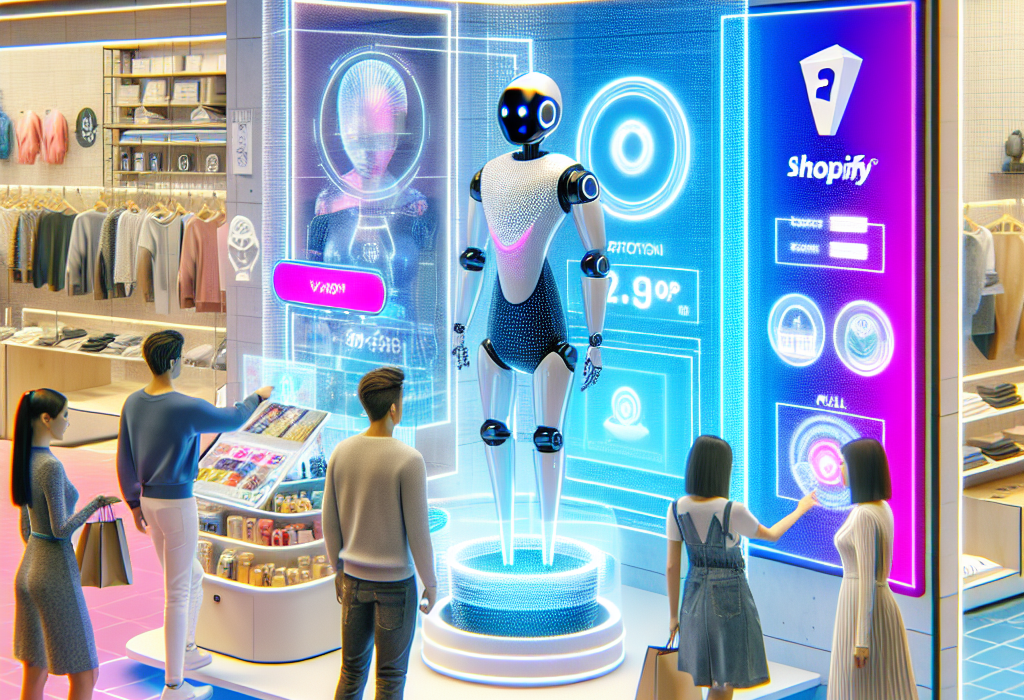The retail industry is no stranger to transformation. From the rise of brick-and-mortar stores to the advent of e-commerce, the way we shop has undergone significant shifts over the past few decades. As we look ahead, it’s clear that the future of retail is poised for even more dynamic changes. Here, we explore some of the most innovative trends shaping the industry and what they mean for retailers and consumers alike.
1. The Ascendancy of Omnichannel Retailing
In an era where the lines between online and offline shopping continue to blur, omnichannel retailing has emerged as a critical strategy. Omnichannel approaches integrate multiple shopping channels – physical stores, e-commerce sites, mobile apps, and even social media – to provide a seamless consumer experience.
Retail giants like Walmart and Target have led the way, employing technologies such as Buy Online, Pickup In Store (BOPIS) and augmented reality (AR) fitting rooms. The aim is to create a cohesive and convenient shopping journey, no matter where the customer chooses to interact with the brand.
Benefits:
- Enhanced customer satisfaction and loyalty.
- Increased sales through cross-channel promotions.
- Improved data collection for personalized marketing.
2. Sustainable and Ethical Retailing
Sustainability is no longer a niche concern but a mainstream demand. Consumers are increasingly aware of the ethical and environmental impact of their purchases. As a result, retailers are pivoting towards more sustainable practices, from sourcing materials responsibly to reducing waste through circular economy models.
Brands like Patagonia and IKEA are pioneers in this movement, emphasizing transparency and sustainability in their operations. Initiatives include reclaiming used products for refurbishment and resale, minimizing packaging waste, and investing in renewable energy.
Benefits:
- Positive brand image and consumer trust.
- Long-term cost savings through efficient resource use.
- Alignment with evolving regulatory standards.
3. Personalization and AI
Artificial Intelligence (AI) continues to revolutionize retail by enabling deep personalization. AI algorithms analyze vast amounts of data to predict consumer preferences and deliver personalized shopping experiences. From customized product recommendations to dynamic pricing strategies, AI helps retailers cater to individual needs at scale.
Amazon’s recommendation engine and Spotify’s personalized playlists are prime examples of AI-driven personalization enhancing user experience. Retailers increasingly leverage AI for customer service too, employing chatbots and virtual assistants to provide 24/7 support.
Benefits:
- Increased conversion rates and customer retention.
- Efficient inventory management.
- Enhanced customer experience (CX) through tailored interactions.
4. Experiential Retail
Brick-and-mortar stores are evolving into experiential hubs where the focus is on engagement rather than mere transactions. Experiential retail centers on creating immersive, memorable experiences that resonate with customers on a deeper level.
Brands like Nike and Apple embody this trend through concept stores that offer interactive elements, workshops, and community events. These experiences not only drive foot traffic but also foster a strong emotional connection between the brand and the consumer.
Benefits:
- Differentiation in a competitive market.
- Enhancing brand loyalty through emotional engagement.
- Encouraging social sharing and word-of-mouth marketing.
5. The Rise of Social Commerce
Social media platforms have evolved into powerful sales channels, giving rise to social commerce. Features like Instagram Shopping, Facebook Marketplace, and TikTok’s in-app purchasing options enable consumers to shop directly from their favorite social media apps.
This trend is particularly popular among younger demographics, who spend a significant portion of their online time on social media. Influencer partnerships and user-generated content further amplify product visibility and credibility.
Benefits:
- Access to a larger and more engaged audience.
- Streamlined purchasing process within familiar platforms.
- Increased brand awareness through social sharing.
6. Contactless and Mobile Payments
The COVID-19 pandemic accelerated the adoption of contactless and mobile payments as consumers sought to minimize physical contact. Digital wallets like Apple Pay, Google Wallet, and services like PayPal are increasingly becoming the norm.
For retailers, investing in secure, efficient payment technologies is no longer optional but essential. The ease and speed of mobile payments enhance the shopping experience, reduce checkout times, and can even integrate with loyalty programs for added benefits.
Benefits:
- Enhanced convenience and customer satisfaction.
- Faster transactions and reduced queues.
- Opportunities for integrating loyalty and rewards programs.
Conclusion
The future of retail is being shaped by an array of innovative trends that promise to make shopping more interconnected, sustainable, and personalized. Retailers who embrace these trends and adapt to evolving consumer preferences will be well-positioned to thrive in this dynamic landscape.
By focusing on omnichannel strategies, sustainability, AI-driven personalization, experiential retail, social commerce, and contactless payments, the industry can look forward to a future that not only drives growth but also enhances the consumer experience in meaningful ways.

